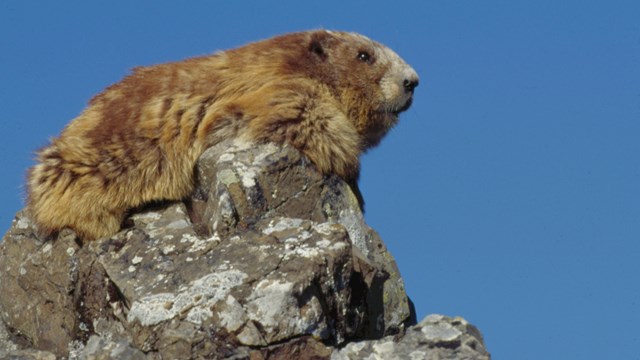
NPS/Bill Baccus Olympic is vast—a largely roadless area nearly the size of Rhode Island encompassing complex natural systems from the rocky Pacific coast to glacier-capped peaks. To understand and protect this ever-changing wilderness, park managers need information. What changes are we observing? How much change is normal? Like a doctor feeling a patient’s heartbeat, scientists monitor ecological “vital signs” in Olympic and throughout the parks of the North Coast & Cascades Network. Shifts in vegetation, glaciers, intertidal communities, bird populations, and other sensitive environmental indicators can provide early signals of change. Tracking vital signs is only part of the picture. Olympic scientists also conduct a wide range of research and monitoring in collaboration with tribal, state, and federal agencies; university researchers; and other park partners. Some research, like northern spotted owl monitoring, is just one puzzle piece in a much larger conservation effort spanning the species’ range. Other projects, like the volunteer teams that collect observations of endemic Olympic marmots, are led by park biologists. Results from scientific study allow park managers to make better decisions and plan ahead to protect Olympic’s ecosystems against emerging issues. But data collected here is also valuable beyond park boundaries. Olympic’s geography means that clean air from the Pacific Ocean and unpolluted water from mountain snowmelt provide a baseline for water and air quality elsewhere. Meanwhile, low levels of human disturbance in the wilderness allows us to pinpoint signs of ecological disruption from human and other causes. As we move into a future beyond historical climate norms, scientific study will continue to provide us with the tools to be informed stewards of this living laboratory—and our interconnected planet. 
Glaciers and Climate Change
Scientists continually monitor the condition of Olympic's glaciers for climate change research. How are they changing? 
Marmot Monitoring Volunteers
Marmot monitoring in Olympic happens with the help of teams of volunteers. Learn more about their work or how to participate. Elwha River Restoration
Discover the history and science of the largest dam removal in U.S. history. 
Fisher Reintroduction
Learn about how this species returned to the Olympics after an absence of around 100 years. 
Fisher Monitoring Map
Learn where fishers went after their release. 
Meet the Scientists
Science Minute Videos offer a peek behind the scenes into the work of researching and managing Olympic National Park Published Science Reports
Olympic Climate Futures Summary
Temperatures are currently rising in Olympic at 3.4°F per century. This 2024 report outlines what climate futures mean for the park. 
Natural Resource Condition Assessment
This 2016 report details the status and trends of Olympic's natural resources—from Roosevelt elk to razor clams to river geomorphology. The NPS DataStore archives studies and reports by park scientists or produced in collaboration with the NPS. Some reports below are part of the NPS Natural Resource Report Series or Science Report Series and are only published in the DataStore. Explore scientific journals and databases to find studies by researchers unaffiliated with the park. Source: Data Store Saved Search 5093 (results presented are a subset). To search for additional information, visit the Data Store. Park Species ListSelect a Park:Select a Species Category (optional):
Search results will be displayed here.

Inventory & Monitoring Network
Learn how long-term ecological monitoring is used to track the health of Olympic and national parks across the Pacific Northwest. 
North Coast & Cascades Science Days 2025
Join us for a three-day virtual symposium in February featuring science that spans parks, ecosystems, and fields of study. 
Conduct Research in the Park
A permit is required for most scientific research activities in the park. Learn more and apply here. |
Last updated: September 17, 2024
